Sri Lanka 19-20
After a long transfer in New Delhi we finally arrived to Sri Lanka, very early in the morning. Our fantastic and gentle driver Malan was waiting for us. We had booked a private driver for 14 days since it is quite cheap in this country. I had planned and booked everything else as it became cheaper and I also like to make my own plans. (Bad photo taken by a present taxi driver!)
Still, we more or less went the most frequent route putting in the most famous and recommended places in the tour. Our first stop was at Sigiriya which is about 5 hours drive NE from Colombo. This area is famous for its giant rock in the middle of a flat country. This site is sacred because of the sculptures and paintings of Buddha. At the top it's also a ruin of a former palace and it's hard to understand how they make the transport up with all the stones and other material that was needed to build it earlier. A must stop and also a good place to see some good birds. Maybe my most wanted species was to see the Indian Pitta. The Swedish name Jewel Thrush is more accurate to the beauty of this hard to see group. Believe my great excitement and joy when one of the first birds seen in the hotel (expansive) garden was this gem. I played the recorder and it responded immediately and flew up in to a tree. The Yellow-billed Babbler was common here jumping on the lawn outside our room and a handsome Shikra made a pose at the garden wall. At the "Rock" the endemic Toque Macaque was common and I fond these young relatives quite irresistible on our way up.
After 2 days at this great (but rainy) area we continued our journey south. Next stop was the hilly town of Nuwara Eliya. At the height above sea level of 1860 meters this is a cooler place surrounded by beautiful forested mountains and the place for the famous Sri Lankan (Ceylon) tea. There are many places to stop for tasting and buying. In Nuwara Eliya the Victoria Park is a famous park for birders. Many migrating species make this their wintering home. Looking at ebird you find many good species but in low account. That is also understandable when you come here. The park is quite small and you walk across it in just 15 minutes. I had a few targets that had to be seen here, if ever during this trip and I managed pretty well. I saw birds like Kashmir Flycatcher, Indian Blue Robin, Indian Black Thrush, Indian Pitta (heard only) and the endemic Sri Lanka White-eye. No photos though as they were all skulking and hard to see even in my bins. More easy birds however were, Indian Pond-heron, Oriental Magpie Robin, Grey Wagtail and the stunning endemic Yellow-eared Bulbul.
Next day we continued to the popular hilly village Ella.Ella is now getting very popular for all kinds of people, backpackers, yoga-people and nature lovers. Here you can make the relatively short walk up to Little Adam's Peak (not be be compared with the original I was told) and witness the stunning sun set.On the way back I got this funny pic of two endemics making acquaintance to each other; the Sri Lanka Red-backed Woodpecker and the Yellow-fronted Barbet.
An other must do thing is to take the walk to the 9-arches Bridge. This bridge lies in a nice valley and people go here to see the local trains pass by. I took a jungle walk here and was lucky to come up close to the national bird of Sri Lanka, the Sri Lanka Junglefowl and also got (maybe) the shot of the trip. Her I also saw a small group of Grey Tits which is closely related to the European Great Tit.
My list increased with some more birds here and just outside my room I found my first Red-vented Bulbul (showed to be quite common further on during the trip).
After two wonderful days our trip went south and down from the hilly areas. The weather had improved significantly the last days and our following days were all more or less sunny and we had that feeling you want of a tropical vacation away from the cold nordic Scandinavia. When you leave the mountains, southern Sri Lanka is rather flat and consists mostly of different types of agricultural habitats. Our new destination was Tissamaharama (Tissa in common talk). Most people who stay here do it because of the proximity to Yala National Park. Yala is world famous for the high possibility of seeing a Leopard. Elephants are usually seen and birdlife is abundant. Before the trip I had contacted a birdingpal clled Nalin (a group of birders from all around the world that like to help travellers) and he had given me some important information how to think and plan my trip. He helped me with a contact to a local guide whit his own jeep and he also suggested that we should not go to the main area in Yala (Block 1-2) but instead to block 5. The reason is that Block 1-2 is very crowded and some people (especially true nature lovers) finds it to be like a driven zoo. I'm happy about our choice and our guide Bandala was great in many ways. As we entered the park we saw our first Spotted Deers which later proved to be very common. Here a male and also a female/ young.
The park is a combination of lakes, rather thick bush but also some more open forest. Our first stop was at a smaller lake where we had this Yellow-billed Stork and a massive Mugger Crocodile.
Close to this lake I got the first endemic of the day, a Sri Lanka Swallow.
I have never seen so many Bee-eaters at the same spot as here. I probably saw more than 300 during the day. Most abundant was the absolutely gorgeous Little bee-eater.
The two other Bee-eaters that are present in Sri Lanka is the rather common Blue-tailed Bee-eater and the least common Chestnut-headed Bee-eater, both real stunners as well.
Next to the lake we got our first raptors for the day, an "unshy" Grey-headed Fish-eagle and a Crested (Changeble) Hawk-eagle. The latter seems to be a bird which taxonomists are discussing as there are many forms and whether it is one or two separate species is still an issue.
A central area in this block is the big lake with an elevated road that leads straight and with good views of what animals and birds that are around. We saw two displaying males of the Indian Peafowl which is a great sighting, especially in the wild.
There were one or two Leopards present in the area but we only saw one resting deep in to the bush which was a little bit of a disappointment. While standing at one point waiting for one, this Grey Mongoose came up close and gave us an interesting moment. Close by this Oriental Dwarf Kingfisher showed up. It's a quite uncommon bird here and our guide said it was the first time he had seen it in this section.
To see elephants you have to drive to an other part of the park (block) as they like the more open areas. In this sector we only saw one old female elephant which was a little bit surprising. A fantastic thing about this time was that we were completely alone here. For 2 hours we drove all by ourselves and beside the elephant (among other good stuff) we saw a group of Golden-backed Jackals, disturbed a Crested Hawk-eagle with a new prey and a stunning White-bellied Sea eagle.
Time for lunch, we parked in a "safe" place and enjoyed the splendid Lankevian kitchen at the back of the jeep. Bandala had prepared some classic curry which tasted good. We had nice views of the uncommon Lesser Adjutant Stork as well as a Hoopoe.
As the afternoon slowly got closer, we started slowly to drive towards the entrance gate. Close by the road we found a group of Water Buffalos. They claim these are true wild ones but if you read about it on serious web sites, most scientists seem to have the opinion that all now (in same way) are mixed up with the feral population. Still a massive sight though. Also my first (and only) Malabar Hornbill was seen here.
Just next to the gate we came up pretty close to the nice and funny Indian Robin, It was displaying, singing and moving all the time and was a great way to finish up the day in this nice park. The sun was dropping and we hit the main road. Inside the park itself we only saw one elephant but now on the main road we had to stop 5 times because of elephants standing on the road. The guide told us that this section was a cross over for them during the afternoon and therefore he had almost expected us to see a few on the way back.
The last day in Tissa I had booked a half day "safari" to Bundala N.P for myself. This park is next to the sea and is a mix of wetlands and bushy habitat. A part of the park is also the salt pans which attracts many shorebirds and other water birds. As the true shore bird lover I am, this day had big expectations, as I would have the chance to get to lifers in this group, Great Thick-knee and the Small Pratincole. The Great Thick-knee breeds here in small numbers and the glorious and quite difficult Small Pratincole winters here in small number. I was picked up by a local guy who took me there. I told him most time should be used for searching these two. The Great Thick-knee was easy and actually seen immediately at arrival but the the pratincole showed (not surprising) to be much harder. Finally after some hard week I saw two birds at quite a long distance in my scope, puh. The pic under is just to give me a souvenir of this moment.
Lots of water attracts kingfishers and my guide became quite excited when we found this Black-capped Kingfisher which is a rare winter migrant. To fill up the list we also got this Pied Kingfisher and the special Stork-billed Kingfisher.
At a small pond we also got this group of Lesser Whistling Ducks in front of a Pacific Golden Plover. I've seen the plover once in Sweden so it was a good bird to see. Mongolian Plovers and Little Stints were quite common and a few came in close enough for a photos.
There are three different species of monkeys in Sri Lanka and 2 of them are decently common when you drive around to different places. This group of young Tufted Grey Langurs was a cute sight in the morning as well as the mother and child.
A splendid finish of this half day was this perched Crested Hawk-eagle.
Most people who visit Sri Lanka spend many days around its magnificent beaches and now it was our turn to spend some time here. I had chosen a tiny beach called Hiriketiya. What I didn't know at the time of booking is that this beach is the best place in Sri Lanka to surf at this time of the year. Waves are not gigantic but the shape of the beach pushes the water in so that waves are created but not at the beaches around. It's a small place but highly recommended. Here my son doing it for the first time in his life and also a beautiful Black-hooded Oriole and that was seen in the garden.
I also took a walk to the next village which has a harbor and on my way I came up with this beautiful Orange-breasted Green Pigeon as well as this funny Toque Macaque.
After 3 days at the sea we started the trip towards Sinharaja (Forest) N.P. This park is the last remaining true rainforest in Sri Lanka. It is also the place to see most of the islands 32 endemics. The most frequent place for birders to visit is at the northern entrance and most reports are from there. However, I decide to try the southern part mostly because it is more convenient and also more "family friendly". I didn't see all endemics but had a truly good time here and saw many good birds. We stayed at a lodge at the absolute edge of the park an d it was ok but I would much more recommend the place my private guide recently has started. Only 2 rooms but they are absolute spotless and next to a valley/ slope down towards the river. I saw so many nice birds here in just an hour. He (Saman Shanta) also has his own restaurant. The place is called Villa Evergreen and restaurant. The first evening I booked him for a night walk which proved to be very successful. Our first bird was the Crested Serpent Eagle which was disturbed by the flashlight, just outside the park.
As we walked in to the forest it started to rain so I got pretty disappointed that the evening would be ruined. I was completely wrong. Except from the wake up of leeches (I had about 20 on each leg) we had fantastic views of Sri Lanka Frogmouth. My guide heard an owl call and he said maybe the endemic Chestnut-backed Owlet but when we finally found it after some tough walking we were stunned to find the Serendib Scops-Owl. This endemic is one of the rarest birds on earth (maybe only 80 of them) and only found in Sinharaja. However, this was actually the first record ever in this section of the park and this made a strong feather in his hat. At the end of our walk he showed me a great Tarantula Spider behind a sign.
The next morning I had booked Saman again for a full day in the rainforest. The plan was to bird whit him alone until 10.30 and then my family would join at a meeting point for further walking inside the park. It's a great park with several water falls and also the chance of a nice swim and "wild" fish therapy. We had a great start directly at dawn with a pair of Brown Fish-owls. A suggestive moment with these glorious birds beside the mist coming up from the river in first day light.
There are 2 endemic Thrushes here, no one easy so seeing on of them in this short time felt almost like a bonus. He knew a place for the Spot-winged Thrush where we also went. In poor light I managed to at least get id-photos to remember this event.
Day light came quick and as you know, bird intensity falls back quickly whit sun and heat. Maybe the biggest target today was the almost unreal Sri Lanka Blue Magpie. Sometimes tricky to see well but still a decent chance even if you only have one morning. At a bridge over the river we managed to finally see a pair which gave a big relief.
My family joined us as planned and we had a great moment in the forest with swimming, fish therapy and a few more birds like this pair of malabar Trogon as well as a handsome endemic Sri Lanka Green Pit Viper. Our friendly guide Saman was with us all the time.
Here in Sinaraja you can see the endemic Purple-faced Langur which is quite rare compared to the other two shown before. We had a group of three which gave good enough looks.
My trip, as far it comes to birds ended the last hour at Shaman's place where I saw my last 2 endemics, the Orange-billed Babbler and Layard's Parakeet and the stunning White-throated Kingfisher. This was a great trip and is highly recommended both as a pure birding trip as well as a combined family trip. Bottom you can see a woman and a kitten. This kitten had hide itself inside the car behind the engine and was too scared to come out. It was pure luck that my daughter saw when it jumped in, otherwise something terrible could had happened. Happy end though.
In total I saw 175 bird species of which 74 were lifers. Of 34 endemics I managed to see 20. Below you can see the list of endemics. SL= Sri Lanka.
Endemics seen: SL Jungelfowl, SL Green Pigeon, Serendib Scops-owl, SL Grey Hornbill, Yellow-fronted Barbet, SL Small Barbet, SL Red-backed Woodpecker, Layard's Parakeet, SL Hanging Parrot, SL Woodshrike, SL Blue Magpie, Black-capped Bulbul, Yellow-eared Bulbul, SL Swallow, SL Scimitar-babbler, Brown-capped Babbler, Orange-billed Babbler, SL White-eye, Spot-winged Thrush, Dull Blue Flycatcher. (20)
Endemics missed: SL Spurfowl, Green-billed Coucal, Red-faced Malkoha (heard Sinaraja), SL Wood Pigeon, Chestnut-backed Owlet, SL Greater Flameback, SL Crested Drongo, SL Bush-warbler, Ashy-headed Laughingthrush, SL Hill Myna (Heard Sinharaja), White-faced Starling, SL Scaly Thrush, SL Blue Whistling-thrush, Legge's Flowerpecker. (14)
Leif Rydell

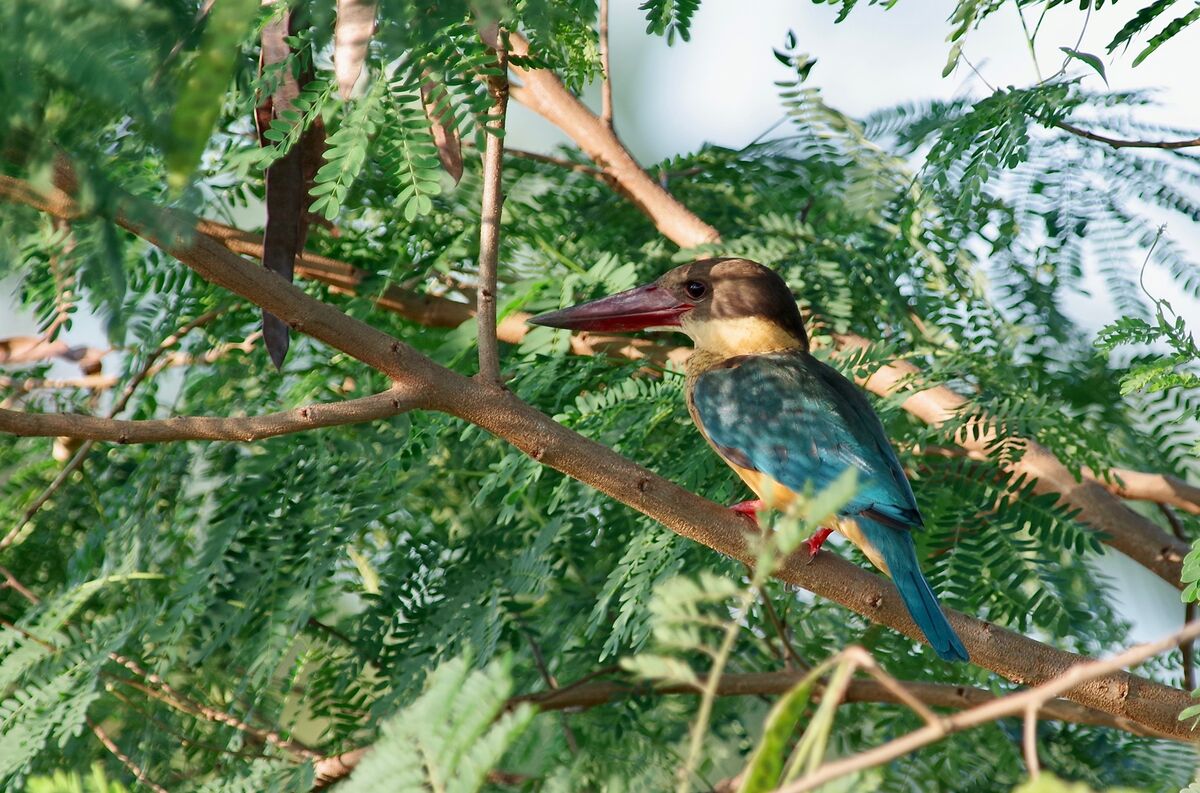
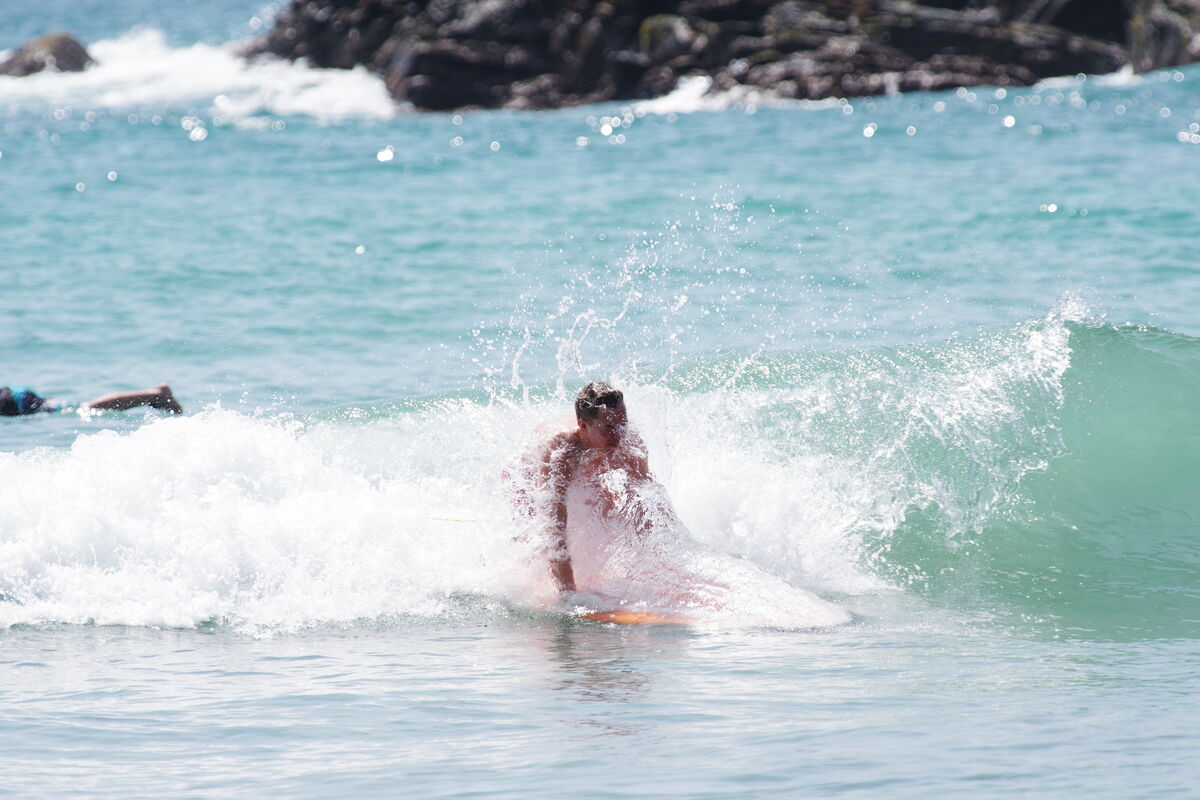
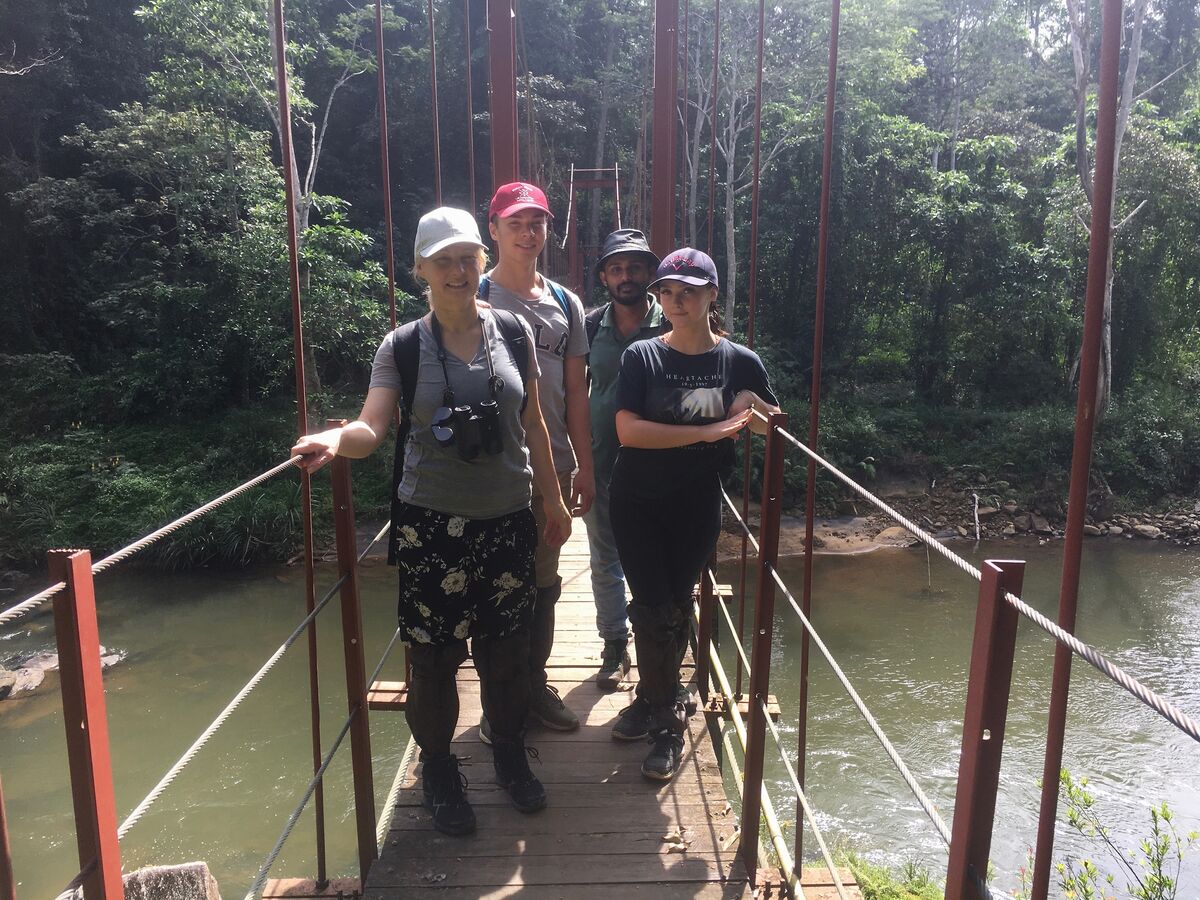
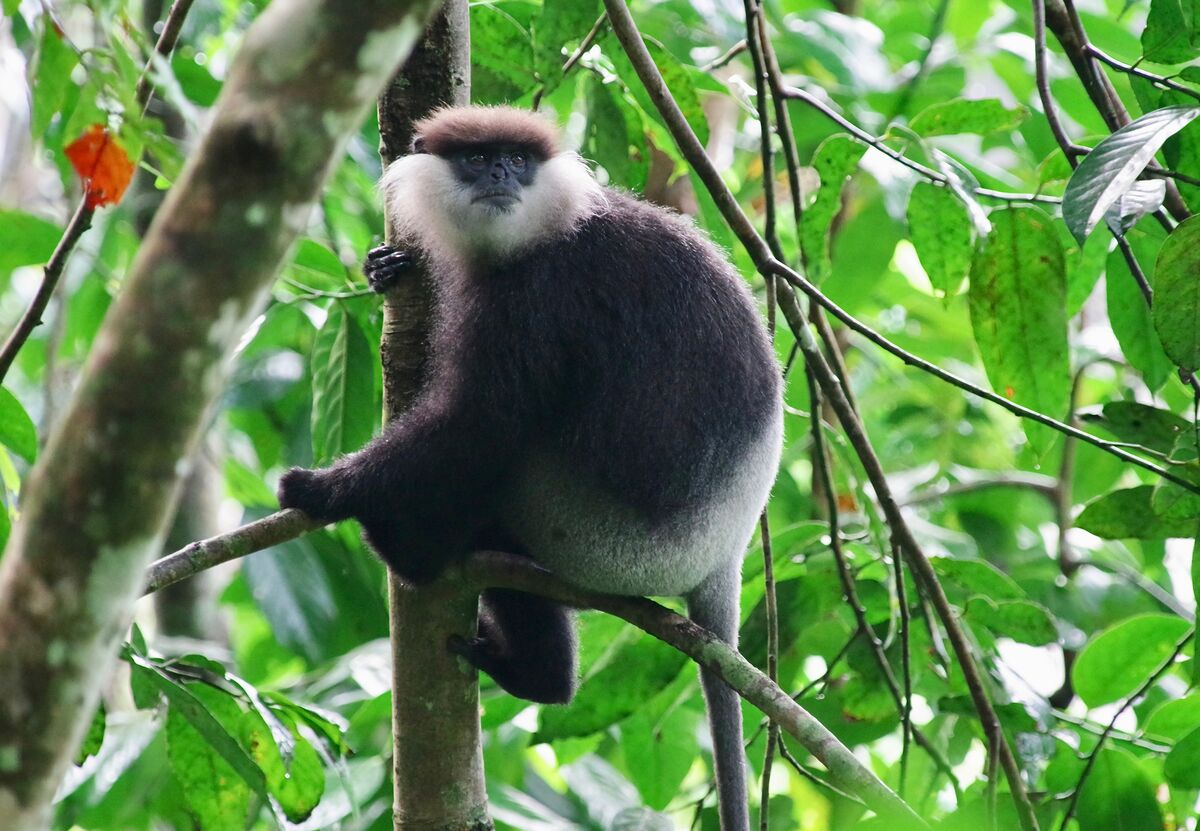
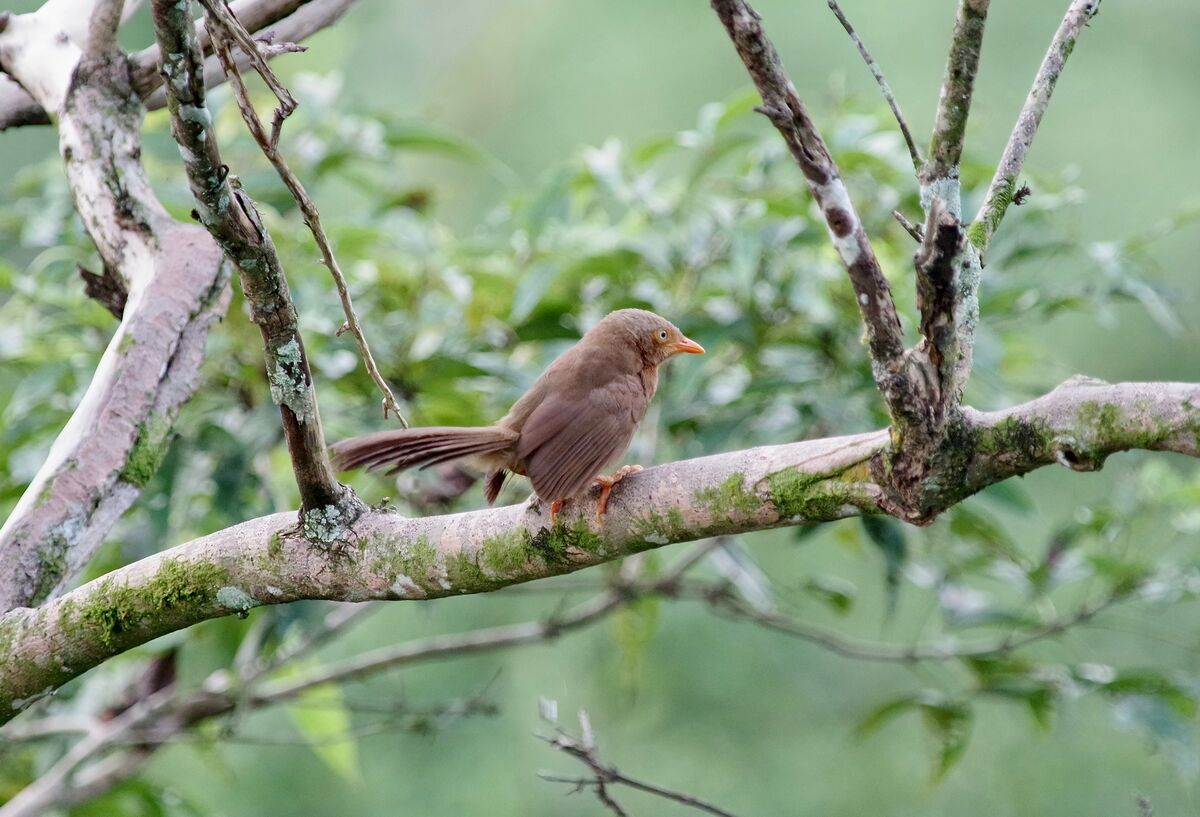


Vilken fantastisk resa ni fick. Grymma bilder. Grattis, ligger nog lite jobb bakom dem. Håller med dig om vilken bild som e bäst.
The jungle fowl e helt grym.
Daniel